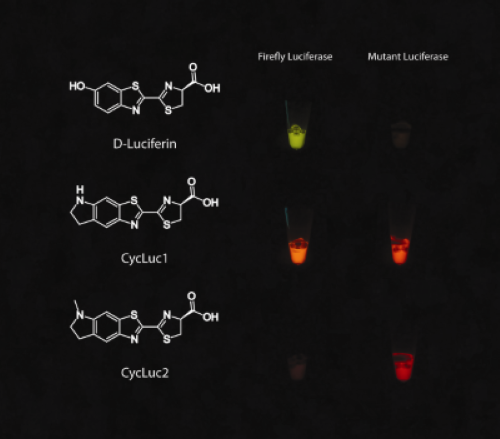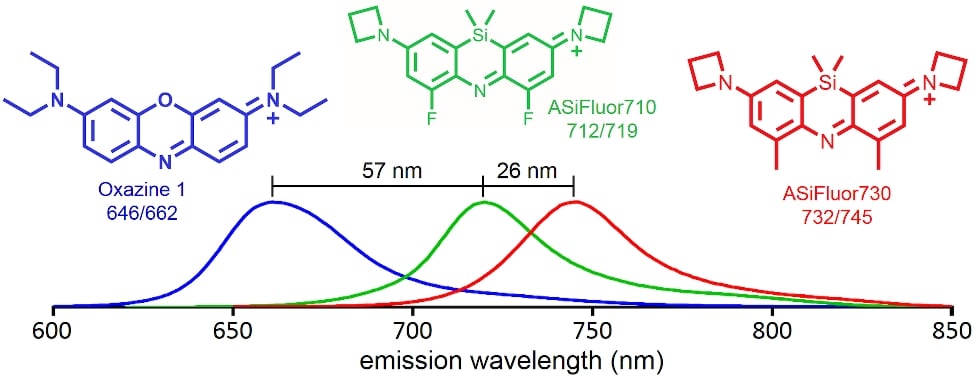Rotations
Broadening the scope of bioluminescence
Bioluminescence results from the chemical generation of light that occurs when a luciferase enzyme oxidizes its small molecule luciferin substrate. We have synthesized a wide variety of novel luciferin substrates designed to improve the ability to detect bioluminescence signals. In parallel, we have mutated luciferases to best accommodate these substrates, and have also found that fatty acyl-CoA synthetases, homologous proteins in non-luminescent insects such as the fruit fly, can act as luciferases. Projects in the lab range from basic molecular-level biochemical, chemical, and evolutionary studies of luciferases and luciferins, to powerful applications such as imaging of enzyme activity and drug action in the brains of live mice.
Fluorescent probes beyond the visible range
Fluorescent sensors of enzymatic activity, metal ions, and small molecules allow the optical detection of biologically-important molecules. However, most of these sensors are based on visible-wavelength fluorophores that suffer from phototoxicity and high background. These probes thus have limited utility in live cells, and are generally unusable in live organisms such as mice. We are designing and constructing sensors that fluoresce in the near-IR, beyond the visible range, which is most suitable for non-invasive optical imaging of the physiological state of live cells and organisms.


